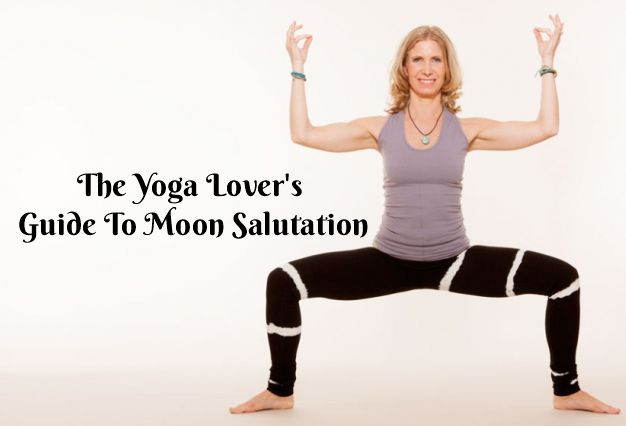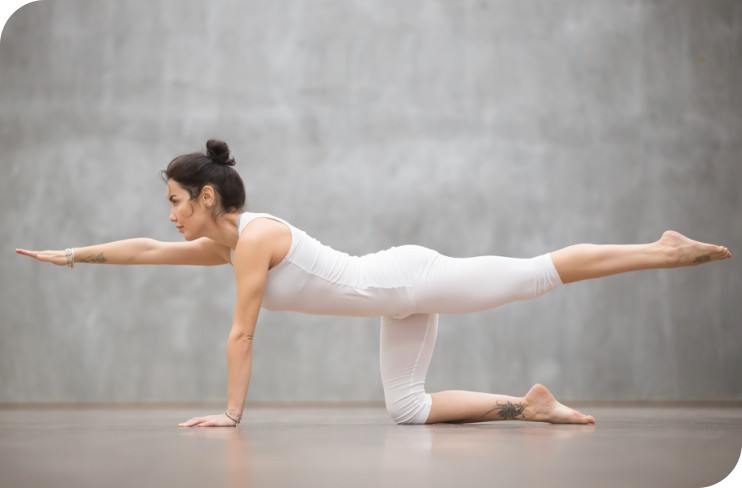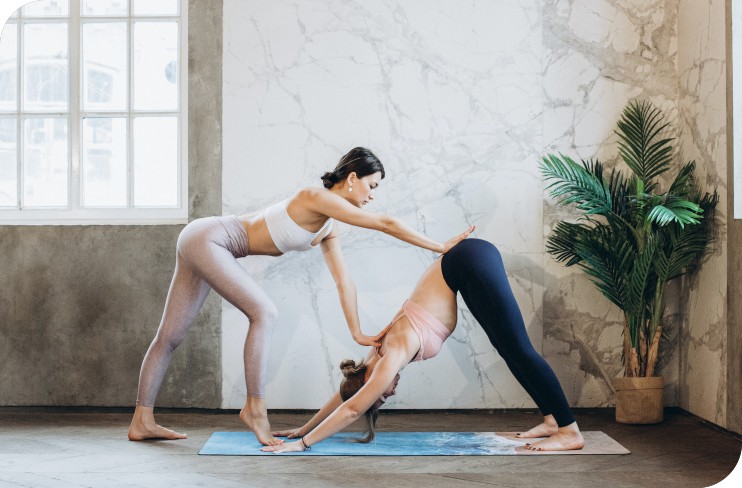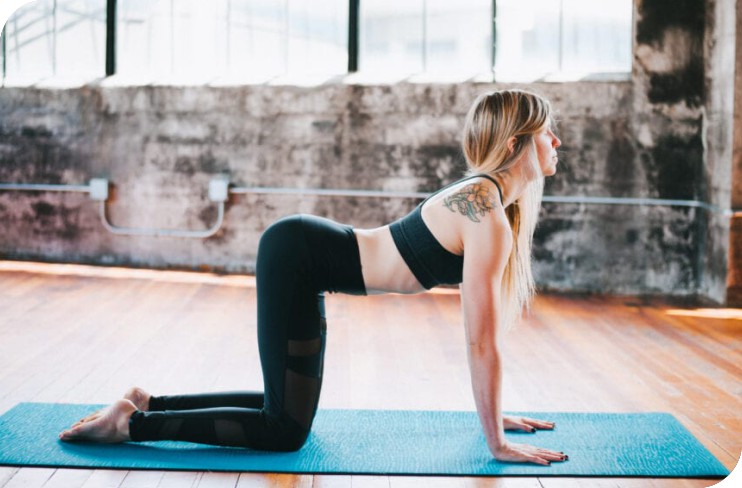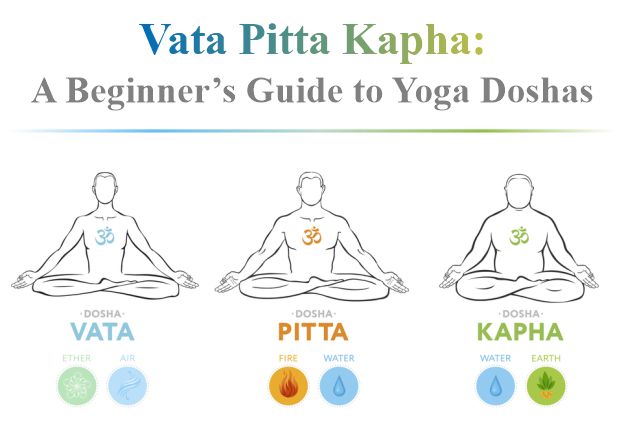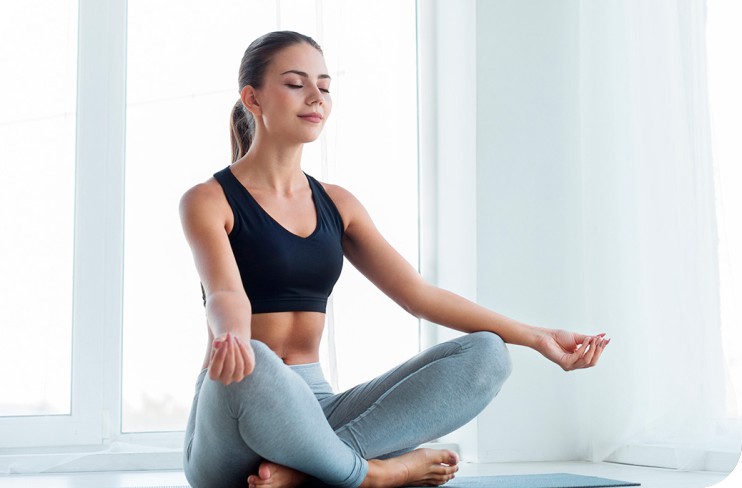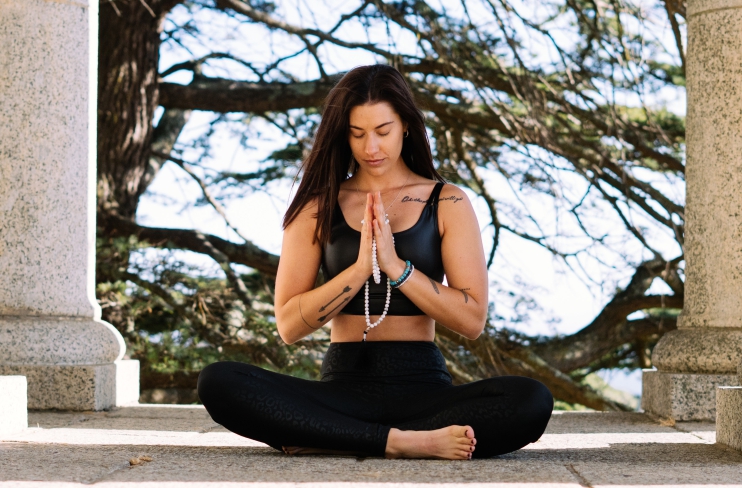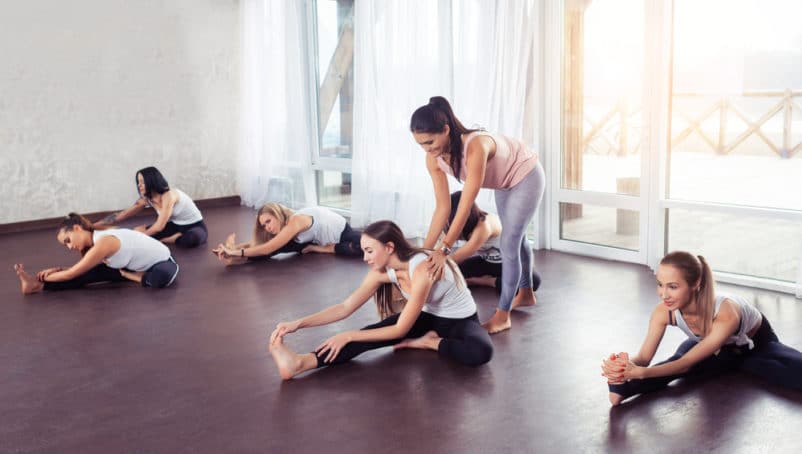The Yoga Lover’s Guide To Moon Salutation Poses Sequence
Everything in this universe is relative. The sun shines and provides us with energy to work during the day while the moon helps our body relax at night. The sun represents the Yang in relation to the moon. However, the moon represents Yang in terms of its relation to Earth. Even the spiritual art of yoga has soothing moon salutation poses that help you relax the mind and body.
Moon salutations consist of a series of relaxing and cooling yoga poses for your body. These are quite effective during the time of the full moon, new moon, and waning moon. The Sanskrit name for Moon Salutation yoga is known as Chandra Namaskara.
To make it easier for you to understand what exactly is Moon salutation, yoga experts have come up with a small guide. Read further to know everything about this yoga style.
Moon Salutation – A Brief Intro
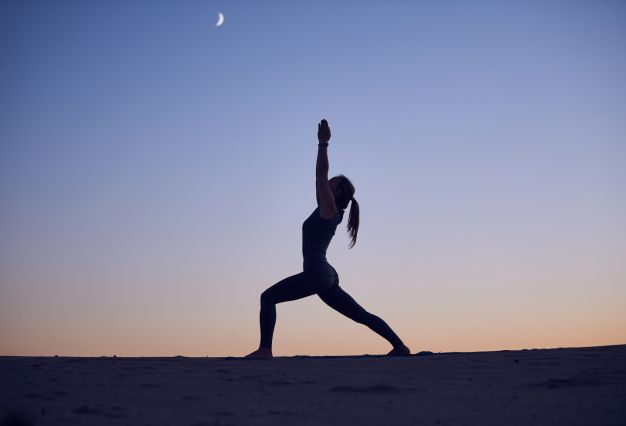
The moon salutation yoga, also known as Chandra Namaskara refers to a sequence of yoga poses that help you calm down the central nervous system. Moon salutation yoga includes low-impact asanas like the Mountain Pose, Star Pose, and Triangle Pose among others.
In the ancient Sanskrit language, the word Chandra means moon and Namaskara means salutation.
However, similar to other styles of yoga; there is always a time to do moon salutations to reap its benefits.
When Is The Best Time To Do The Moon Salutation?
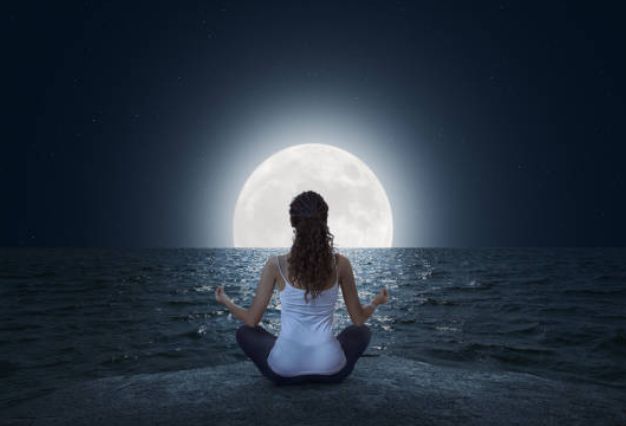
Although you can practice Chandra Namaskar any time of the day, there are a few times when doing this sequence is a bit more beneficial.
1. After Yoga Practice
Moon salutations work the best when you do them at the end of a yoga session. It helps you cool down after a good workout, and balances the Yin-Yang energies in your body.
2. During New or Full Moon
To align your body and mind with the moon’s cycles, you can practice the moon salutation sequence during the new or full moon.
3. Before Bedtime
When combined with slow breathing, moon salutation poses rids you of sleeping problems. It relaxes your mind before going to bed.
There is a lot more than moon salutation does to help you develop a calmer mindset. Given below are some cool benefits of Chandra Namaskar.
Major Benefits Of Moon Salutations
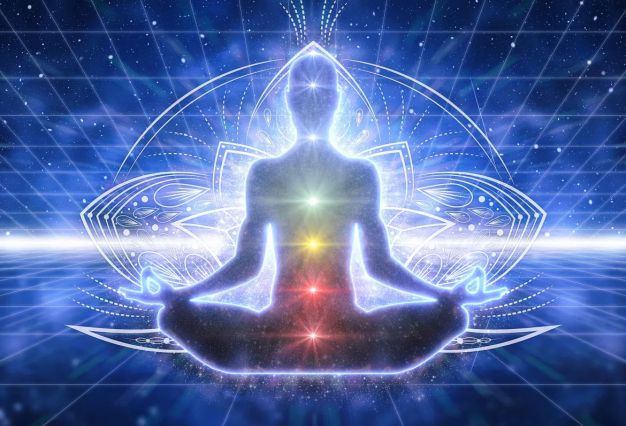
Yoga experts have come up with some impressive Moon salutation benefits.
1. Balances The Chakras
Doing Chandra Namaskara brings your entire chakra system into balance. The first three chakras are stimulated with hip opening and forward bending poses, the fourth and fifth chakra with backbend and opening of shoulders and arms, and the last three with forward and side bends.
In other words, every moon salutation pose opens up a specific energy channel for unrestricted flow of the sacred energy.
2. Hip & Heart Opening
Daily practice of moon salutations opens your hips and improves flexibility in your hamstrings, quadriceps, pelvis, and buttock muscles. Moreover, the variety of poses in this yoga style gives your shoulders and arms a good stretch.
3. Beneficial For Women
Doing moon salutation is also beneficial for women. It develops the feminine side of the human body which keeps it in a cool and relaxed state. Moreover, this yoga style helps women improve their health and fertility. In the long run, this improves their balance and stability.
4. Fights Anxiety & Stress
Since doing Chandra Namaskara keeps your body cool and relaxes the various systems; the moon salutation poses minimize stress levels in your body and mind. It is quite useful as a yogic technique to deal with depression and anxiety.
5. Treats Insomnia
As you practice moon salutation at the end of every yoga session, especially at night; this helps you enjoy quality sleep at night. The soothing effect these poses have on your central nervous system calms down your body and prepares the mind to relax.
However, do you know what sets Moon salutations apart from the traditional Sun salutations? Read further to know.
Sun Salutations Vs Moon Salutations
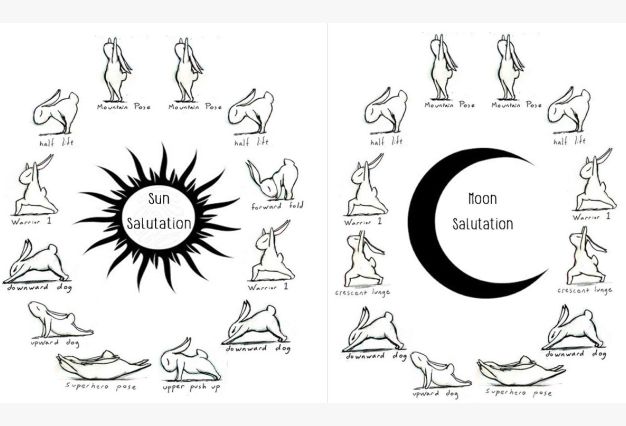
The moon salutation represents the Moon (Ida Nadi), which is the feminine side of the sacred energy in your body. It is a sequence used by teachers during a Yin Yoga class to balance the different energies in your body.
With that said, given below are some key differences between Moon and Sun Salutation.
1. Best Time Of Practice
As the name suggests, the Sun Salutation is done during sunrise or sunset, moon salutation on the other hand is done when the moon is visible.
2. The Representation
On one hand, the moon salutation represents Ida Nadi, which is the female part of the energy in your body. Sun salutation represents the Pingla Nadi, the male part of the energy in your body.
3. Type Of Yoga
On one hand, sun salutations are part of Yang yoga, the moon salutation is a part of Yin yoga. The yang yoga increases energy in your body with a steady flow. Yin yoga is more suited for giving your body a deeper stretch to keep it cool.
Moon Salutation Poses
For you to experience the full benefits of moon salutations, you have to practice the right yoga poses.
With that said, given below is the complete moon salutation sequence.
1. Prayer Pose
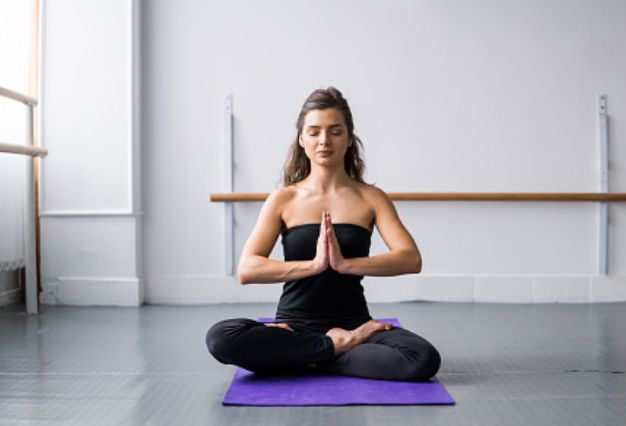
- Stand upright on the yoga mat with feet together and hands by your sides.
- Slowly bend your elbows and bring your palms together in the Anjali Mudra.
- Bring your hands in front of your chest.
- Close your eyes, relax the entire body, and breathe normally.
2. Raised Arm Pose
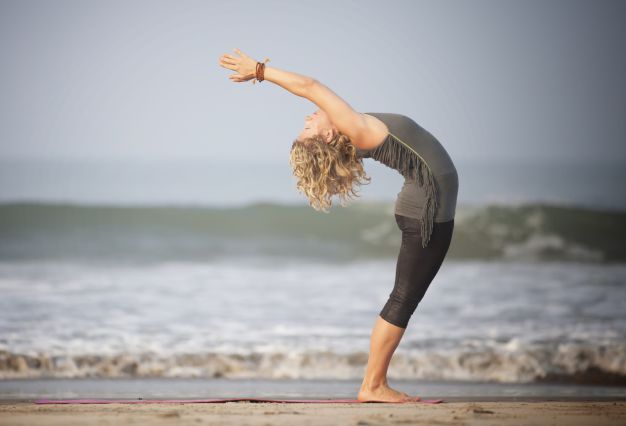
- Stand on the yoga mat with both hands by your side and legs together.
- Inhale. Raise your hands and bend backwards to form an arch with your spine. Try taking your hands as high as possible.
- Arch your back and push your pelvis to the front. Maintain both in balance.
- Keep your elbows and knees straight.
- Your chin should face the ceiling, and keep your head between both your hands.
3. Hand To Foot Pose
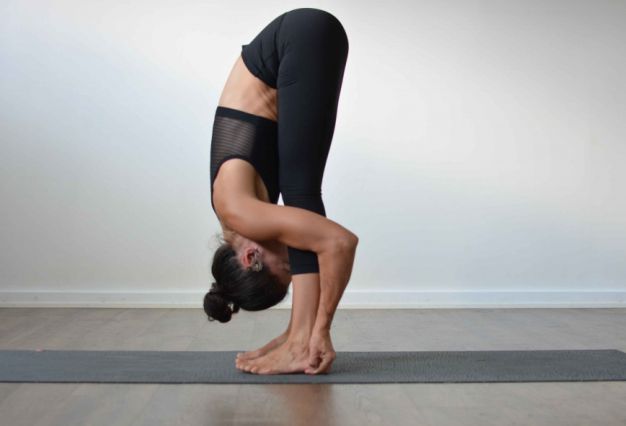
- Given below are the Moon Salutation Steps for this pose.
- Stand on the yoga mat with both feet closed and hands by your side.
- Exhale. Bring your body into an upright position. Keep both hands straight and parallel to each other.
- Bend forward and place your hands beside either side of your feet.
- Try touching your forehead to the shin bone.
- Keep both knees straight. Avoid curving your spine by touching your chest to your thighs.
4. Equestrian Pose
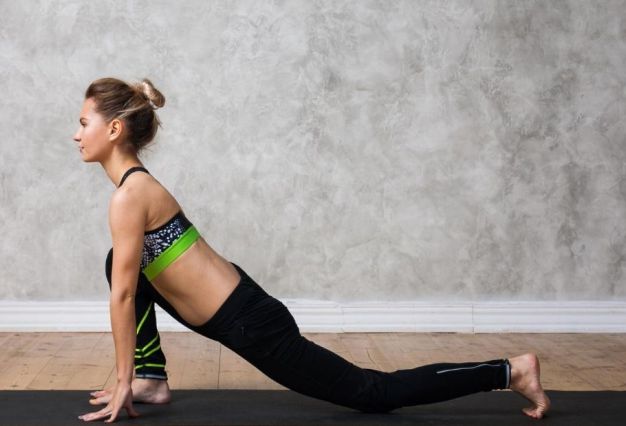
- Right from Padmasana, inhale and move towards the Equestrian pose.
- Bring your right leg back as far as possible. Make sure the sole of your feet is facing the ceiling.
- Roll up your shoulders to open your chest and look towards the ceiling side.
- Touch the yoga mat with your fingers.
- Make sure your both hands and left leg are aligned and form a straight line under your shoulders.
5. Half-Moon Pose
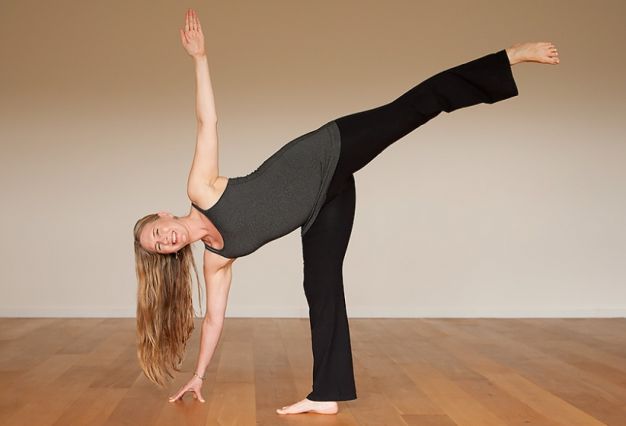
- Stand on the yoga mat with both hands and legs straight.
- Slowly bend your left leg and take your pelvis a bit deeper than in the Equestrian pose.
- At the same time, you have to shift your right leg farther behind your body.
- Keep your right toe tucked into the mat.
- Inhale. Roll your shoulders behind to stretch your hands further.
- Maintain your gaze towards the ceiling.
Note: This yoga pose will open up your chest.
6. Mountain Pose

- Exhale. Move your palms on the floor.
- Place your left foot beside your right foot and lift your hips towards the ceiling.
- Elongate your spine and lock the shoulder blades.
- Engage your thighs and glutes to straighten your legs.
- Keep your head in between your hands and look towards the foot.
- Make sure you form a perfect V with your body.
This is an excellent Moon Salutation For Weight Loss asana.
7. Eight Limb Pose
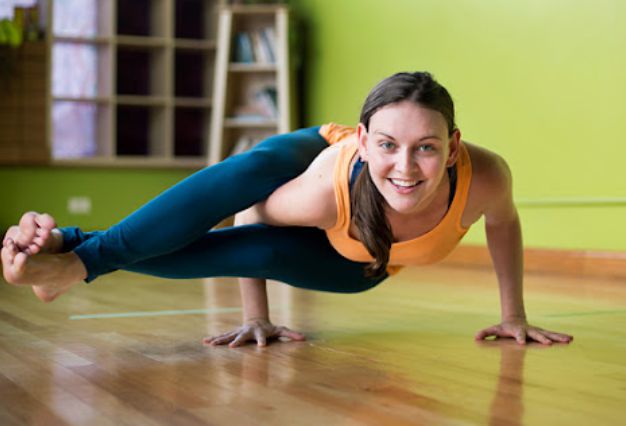
- Take one more exhale and lower your pelvis.
- Try to touch your knees, chest, chin, or forehead to the floor.
- Keep your feet tucked in during this pose.
- Keep both palms beside your chest and hold your breath.
8. Cobra Pose
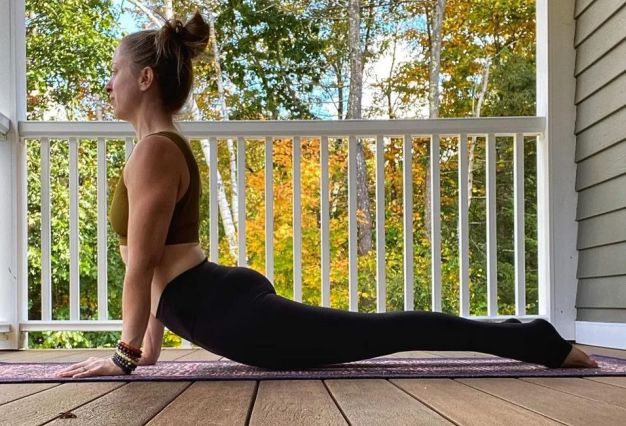
- Next, inhale and slide forward raising your chest in an upward direction.
- Make sure you form a concave curve with your spine.
- Keep the soles of your feet facing the ceiling.
- Keep both palms still on the mat and look up to stretch your chest.
This is one of the best moon salutations poses to give your chest and shoulders a good stretch.
9. Mountain Pose
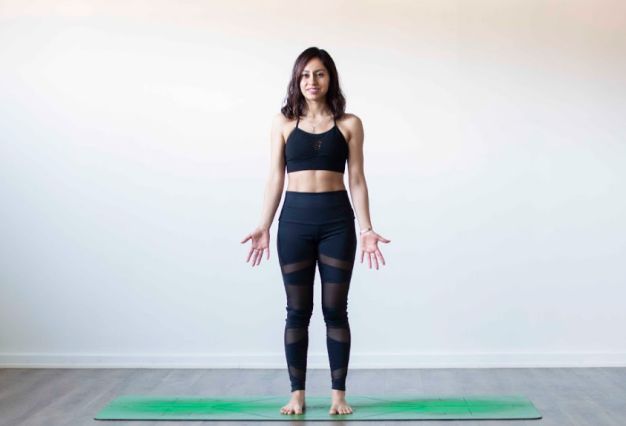
- From Cobra Pose, enter into the Mountain pose.
- Now, exhale and press your palms into the yoga mat.
- Raise your pelvis a bit more.
- Lift your knees, chest, chin, and forehead up.
- Lengthen your spine to straighten your back.
- Keep both hands and legs straight.
- Place your foot on the mat.
However, for you to reap the benefits of moon salutation, you need to know the correct moon salutation mantra. Yoga experts have come up with complete information to help you practice Chandra Namaskara without any hassle.
The Mantra For Moon Salutations
In the Sanskrit language, the word Chandra translates into “The Moon”. Chandra is the cool deity of the moon and connected to Soma, the nectar of immortality and fertility.
According to Vedic astrology, the moon represents emotions, intuition, imagination, feelings, and perception. The reason why the moon is associated with these qualities is the ancient yogis connected it to the deeper states of the mind which you enter through deep sleep. It is during sleep that you are able to connect to the ocean of knowledge that is your subconscious.
What About Moon Worship?
Moon worship has been a part of many religions and traditions for a long time especially in regards to the moon’s cycle, tides of the sea, and female menstrual cycle. Still, many of us are unaware of the synchronicity of the moon.
With regards to moon salutation poses, these offer an excellent way to connect to the energy of the moon at night time. Given below is the Chandra Gayatri Mantra to help you dive deeper into moon salutation practice.
- The Chandra Gayatri Mantra
- Om Kshira Puthraya Vidhmahe
- Amrithathvaya Dheemahi
- Tanno Chandra Prachodayat
If you look at the cyclical nature of the moon, it reminds you of the cyclical nature of life. You come to realize that change is a natural part of us. You can chant this moon salutation mantra every night before sleeping to mark the end of each day and relax your body and mind.
There it is! The complete guide to different moon salutation poses to help you relax your body and mind after a tiring day at work.
A common question that many first time practitioners of moon salutation have is –
How Can I Include Both Sun & Moon Salutation In Daily Yoga Practice?
As stated above, you do Sun salutations at the beginning of a yoga session to awaken your body and generate energy for the yoga practice. These are best done in the morning at sunrise or at sunset during the evening.
On the other hand, the relaxing moon salutation poses are best done as part of a relaxing sequence of yoga asanas. Yoga experts recommend you do these asanas during the evening time to prepare your body and mind for a night of deep and relaxing sleep.
During hot summers, you should practice the cooling moon salutation yoga poses to connect with the feminine energy within.
Conclusion
Do you want to experience the coolness and calmness of the moon’s lunar energy? You should enrol in a certified yoga school to learn about moon salutation poses. It is an ancient art that has been in practice for thousands of years and helped millions bring their chaotic mind to a peaceful state.

